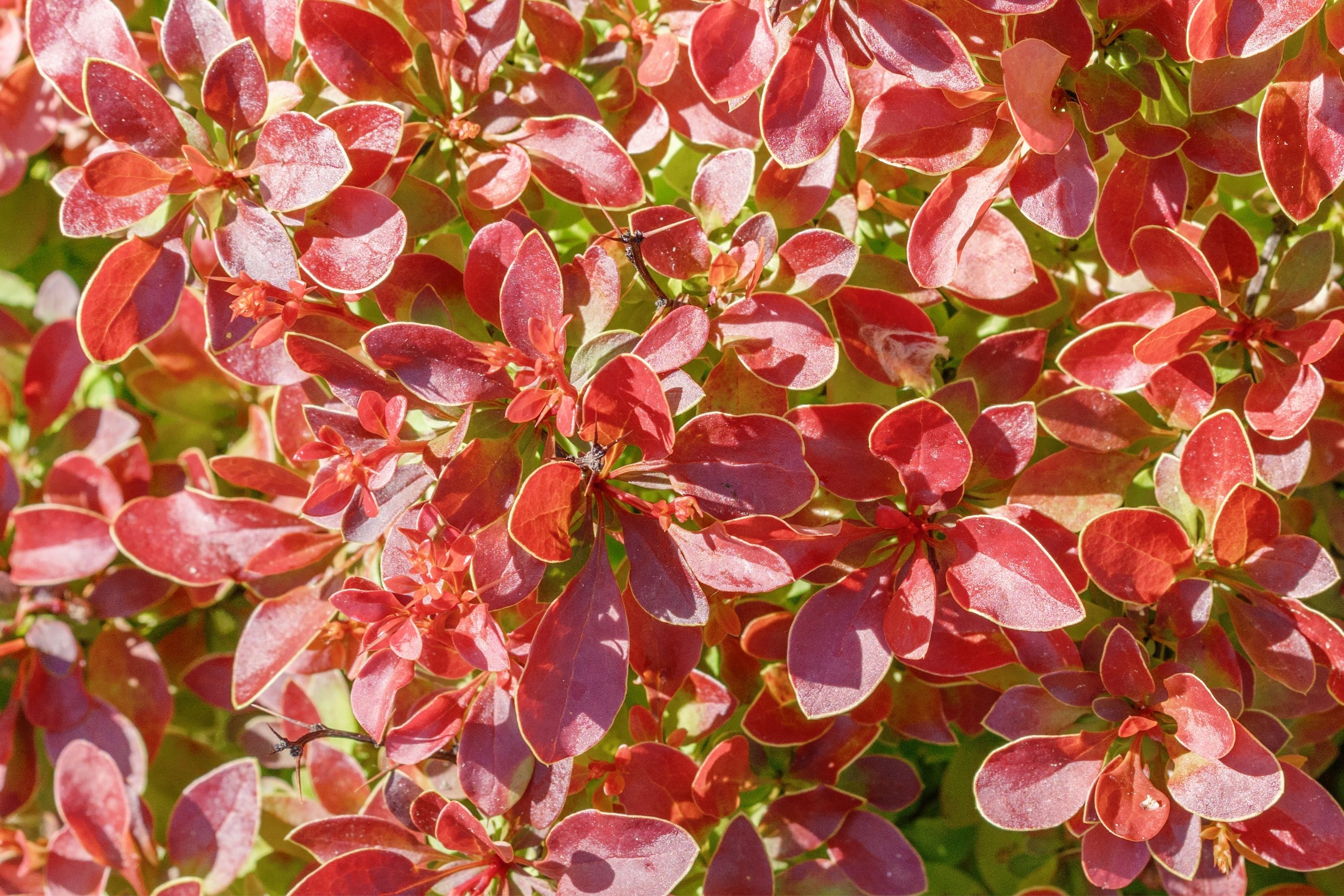Japanese barberry
(Berberis thunbergii)

Description
Berberis thunbergii, also known as the Japanese barberry or Thunberg's barberry, is a species of deciduous shrub native to Japan and eastern Asia. It is a popular ornamental plant due to its attractive foliage, vibrant colors, and ability to thrive in a variety of growing conditions. In this article, we will explore the characteristics, cultivation, and uses of Berberis thunbergii. Classification and Description Berberis thunbergii belongs to the family Berberidaceae, which includes approximately 14 genera and 700 species of plants. This species is characterized by its spiny stems, which grow up to 1.5 meters in height, and its small, oval-shaped leaves that grow to approximately 2-5 cm in length. The leaves are green in the spring and summer but turn to shades of red, orange, and yellow in the fall. The shrub produces small yellow flowers in the late spring and early summer, followed by bright red or orange-red berries in the fall that are about 0.5 cm in diameter. Cultivation Berberis thunbergii is a versatile shrub that is well suited to a variety of growing conditions. It prefers well-draining soils and full sun, but it can tolerate some shade and a range of soil types. The shrub is drought tolerant once established, making it a good choice for low-maintenance landscapes. Propagation can be achieved through seed, cuttings, or layering. Seeds should be sown in the fall or early spring, while cuttings should be taken in the early summer and rooted in moist soil. Layering involves bending a stem to the ground and covering it with soil, allowing roots to form before severing the new plant from the parent. Uses Berberis thunbergii is primarily used as an ornamental plant, thanks to its attractive foliage and colorful berries. It is commonly used in hedges, borders, and mass plantings, but it can also be grown as a specimen plant in a garden or container. The shrub is also sometimes used in traditional medicine for its anti-inflammatory and anti-bacterial properties. Potential Risks Berberis thunbergii is considered an invasive species in some areas due to its ability to spread rapidly and displace native vegetation. It can also harbor ticks, which can carry diseases such as Lyme disease. For these reasons, it is important to be cautious when planting Berberis thunbergii and to avoid allowing it to spread beyond intended areas. In addition, the shrub's spiny stems make it difficult to handle, so gloves should be worn when pruning or handling the plant. Conclusion Berberis thunbergii is a popular ornamental plant that offers attractive foliage and vibrant colors. It is a versatile shrub that can thrive in a range of growing conditions and is relatively low-maintenance once established. However, it is important to be aware of the potential risks associated with planting Berberis thunbergii, including its invasive tendencies and potential for tick harborage. By taking precautions and planting responsibly, gardeners can enjoy the beauty and benefits of this versatile plant.
Taxonomic tree:







